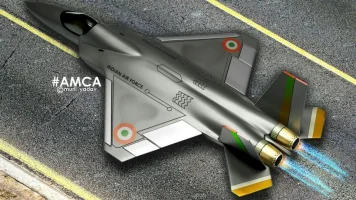- Views: 2K
- Replies: 24

The AMCA MKII isn't simply a next-gen fighter; it's a testbed for future technologies. This data-fusion-driven aircraft incorporates elements like electronic pilots and autonomous flight capabilities, blurring the lines between human and machine.
These features aren't just about making the aircraft smarter; they're about preparing the IAF for a future where air combat is increasingly reliant on artificial intelligence and automation.
Remote Piloting: A Safety Net for the Future
AMCA MKII's Remote Pilot capability is a nod to the potential dangers of future aerial warfare. In scenarios where a pilot is incapacitated, a remote operator can take control, ensuring the mission's success and the pilot's safety.This feature is more than just a backup plan; it's a glimpse into a future where unmanned combat aerial vehicles (UCAVs) may play a significant role.
Directed Energy Weapons: A Glimpse into 6th Generation Warfare
The podded Directed Energy Weapons (DEW) systems planned for AMCA MKII are a game-changer. These weapons, capable of neutralizing threats in the air and on the ground, are a hallmark of 6th-generation aircraft.By incorporating DEWs into the AMCA, India is gaining valuable experience and expertise that will be invaluable as it develops its next generation of fighter jets.
Learning and Evolving: AMCA as a Stepping Stone
The AMCA program isn't just about building one aircraft; it's about learning and evolving. The technologies developed and lessons learned from the AMCA will directly inform the design and capabilities of future Indian fighter jets. By gradually incorporating elements of 6th-generation technology into the AMCA, India is ensuring a seamless transition to a new era of air power.India's focus on bridging the technology gap with AMCA is a smart move. It allows the IAF to stay competitive in the present while preparing for the future. By investing in the AMCA, India is not only strengthening its air force but also establishing itself as a leader in aerospace innovation.
The AMCA program is more than just a fighter jet project; it's a strategic vision for the future of Indian air power. By focusing on bridging the gap between 5th and 6th-generation technology, India is setting itself up for success in an increasingly complex and competitive global environment.

